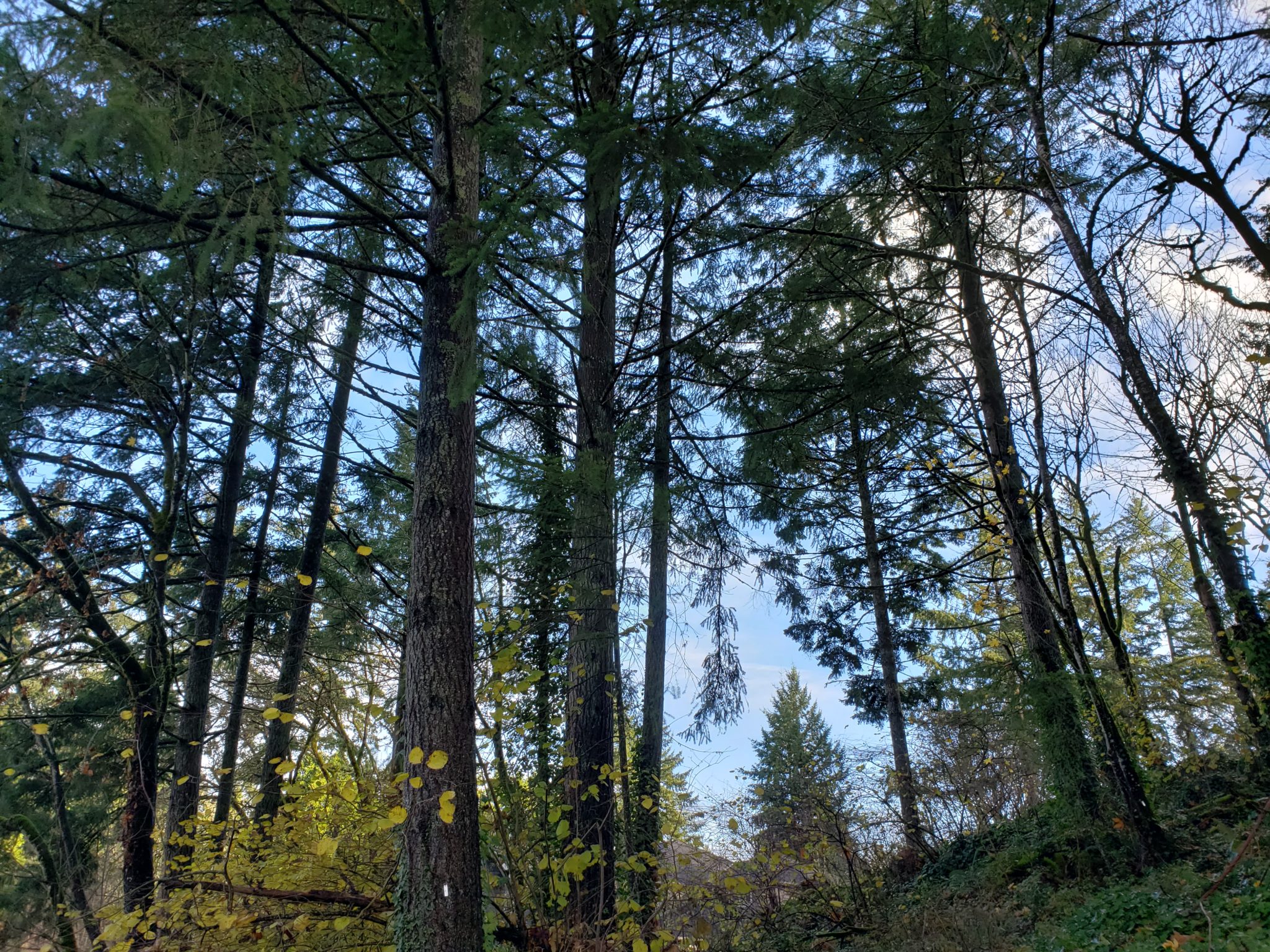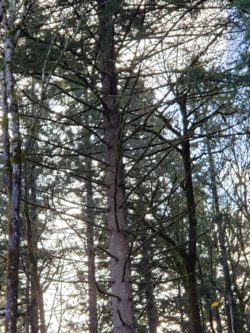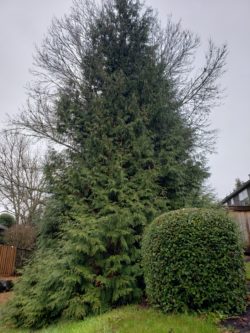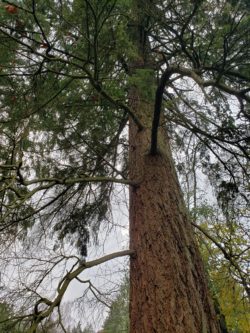
Tree Self-Pruning
When you walk along a forested trail in the Pacific Northwest, you may notice that most of the tall trees do not have branches growing close to the ground. Younger trees of the same species have branches growing close to the ground, so what happened to these lower branches as the trees grew taller? The trees self-pruned their own branches.

In the woods, tall evergreen trees like Douglas-fir grow in dense stands, shading the understory of vine maple, salal, and ferns. The tall trees also shade each other and their own lower branches.
When the leaves on a branch of a tree no longer receive enough sunlight to photosynthesize and contribute energy for the tree, the tree deposits resins at the base of the branch to seal it off. This prevents the tree from wasting precious resources (carbohydrates, minerals, and water) by supporting an unproductive branch.
The sealed-off branch dies and is weakened by fungi and insects before being broken off by wind, snow, or ice. This process is self-pruning. The Douglas-fir above has many self-pruned dead branches attached to the lower trunk.
Different species of trees have varying levels of shade tolerance and self-prune their branches when they become too shaded for that species. Shade-intolerant Douglas-fir self-prunes its lower branches at a faster rate than shade-tolerant hemlock. Trees grown in the open are less shaded and their lower branches persist as long as they receive sufficient sunlight.

In our urban forest, the phenomenon of tree self-pruning affects the type of trees we plant, where we plant them, as well as how we prune our trees. If a tree is being planted to serve as a privacy screen from ground level, then a species less likely to self-prune its lower branches should be selected. Shade-intolerant Douglas-fir trees do not make good ground-level screening trees in the long-term. Western red cedars (seen above) and hemlock are good choices of shade-tolerant evergreen trees with persistent low branches. This phenomenon should also be taken into account when planting nearby trees which will cast shade.

In a yard setting, a self-pruned branch could be a hazard as it decays if it is growing above a structure or living area. In a landscape, the falling self-pruned branch could also damage plants below it. In these cases, instead of waiting for it to fall off naturally, our arborists may recommend proactive removal of these dead branches, like the dead lower Douglas-fir branches seen above.
Understanding the natural phenomenon of tree self-pruning can help you decide what tree to plant where and how to care for them.


